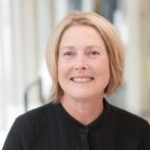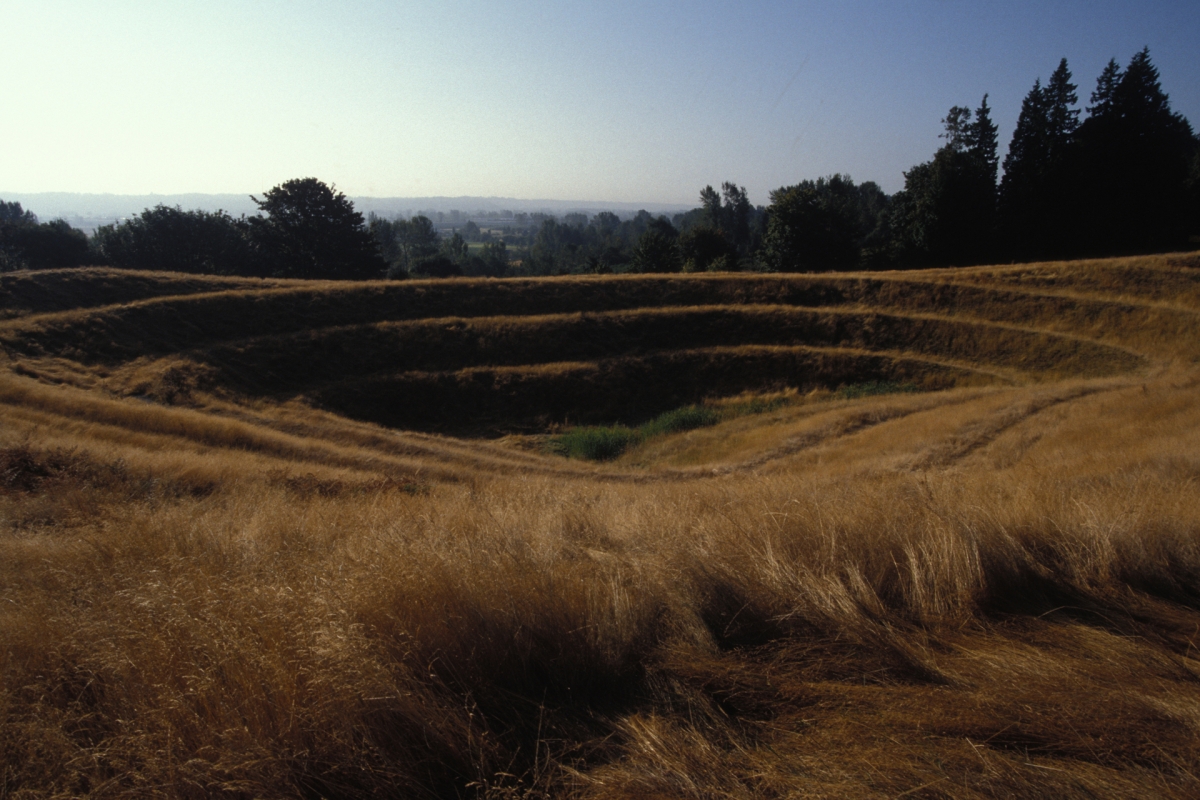Artists’ works—and thinking.
Posted by Jun 13, 2017

Ms. Cath Brunner
When I was in college, Professor Bob Gilmore succinctly described the ethos of the career I would one day choose as a public art administrator. Mr. Gilmore taught Visual Fundamentals (a requisite course for all art and design students) as well as 2D and textile design. Every year, he would squire talent scouts through the design department, but also bring them to the painting and sculpture studios. I asked him why design industry pros would be interested in talking to art students with no training—or interest—in applied and graphic design. He told me, “They are not looking for what you know—for what you are trained to know. They are looking for how you think.”
Sometimes the most innovative and successful solutions come from collaborating with those who do not think the way you do. This is what practitioners in the Pacific Northwest have been willing to do since the beginning of public art programs in the region. The thinking and unique perspectives of artists have been valued as much as or more than the objects they may produce.
One of the first initiatives of the nascent King County Arts Commission was the 1979 Earthworks: Land Reclamation as Sculpture. Administered by Jerry Allen and Yankee Johnson, the symposium resulted in Robert Morris’s Untitled Johnson Pit #30 in SeaTac and Herbert Bayer’s Mill Creek Canyon Park in Kent. This initiative was and is a master class in risk-taking, coalition-building, and ambitious programming. As the King County archivist website states: “In involving contemporary artists in land reclamation, the King County Arts Commission entered a field that no governmental agency had yet attempted on any significant scale.” The Arts Commission had to learn how to speak public works, and King County Public Works—road builders, drainage experts, utility workers—were given a chance to ponder the meaning and value of a four-acre sculptural “reclamation.” Imagine, if you can, the selection panel for this unprecedented undertaking and the risk they took when they chose Robert Morris, who was described by Seattle Times art critic Deloris Tarzan Ament as “one of a handful of artists in the world whose work is so consistently innovative as to elicit shock with each new concept. … [His] creative thinking … [has] forced tentative new definitions of what art means and could mean.”

There were failures and setbacks, angry neighbors, and letters to elected officials. Morris’s symposium keynote posed an essential critique of our practice, questioning the role of the artist, the public, and the media. Rejecting the notion that he was there as decorator, Morris asked, “Will it be a little easier in the future to rip up the landscape for one last shovelful of non-renewable energy source if an artist can be found (cheap, mind you) to transform the devastation into an inspiring and modern work of art? Or anyway, into a fun place to be? Well, at the very least, into a tidy, mugger-free park.”
That was King County in 1979. What a remarkable beginning.
I began my arts administration practice that same year, in 1979, when Robert Morris completed the earthwork. I hardly imagined it as a career. I don’t think there were any degree programs in arts administration. Like many of us in the ’80s, I was a studio artist who had some administrative skill sets. Essentially, I was an embedded artist—and everywhere there were others like me, in nonprofit community-based organizations and governmental agencies.
I was not part of the development of the Earthworks symposium, but almost 15 years after its creation, the evolution of Johnson Pit #30 became an urgent part of my job. Succumbing to pressures from surrounding housing developers and reactions to illegal dumping and partying at the site, the County Council considered demolishing the earthwork to make way for something more easily identified—and used—as a park. Fortunately, the Council did not vote to destroy the art, but instead made an appropriation for its restoration.

The earthworks are still here—part of our cultural history and landscape. The extraordinary leap of faith that was the Earthworks project continues to challenge us to be bold. The guiding principles of the Earthworks symposium continue to inform our work and our thinking about what really matters:
- Our work is only as good as the caliber of artists that choose to work with us.
- Building coalitions of partners strengthens the work and expands the reach and possibilities.
- Advocating for artists is not mutually exclusive to providing value to the public. The public is best served when artists have the opportunity and support to be ambitious and to do their best work.
- We can’t be afraid to stimulate debate and dialogue and to take risks, but it is vital that we are exceptionally proficient in the language of advocacy and communication strategies.
We are gathering in San Francisco this week to consider an ever-expanding ecosystem, loosely labeled as “public art.” Ecosystem seems an apt metaphor, as we are an interdependent network that relies on diversity, adaptability, and evolution. The public art preconference has provided me with the opportunity to look back at the extraordinary ambition and innovative foundation we have built upon in the Pacific Northwest—and to look forward to the unlimited potential that lies ahead.
Artists think differently, and they have an amazing capacity to invite others to do the same.
Cath Brunner is the recipient of Americans for the Arts’ 2017 Public Art Network Award. Given annually since 2003, the award recognizes an individual or organization that demonstrates innovative contributions and/or exemplary commitment to the field of public art. Brunner is a member of Americans for the Arts.





